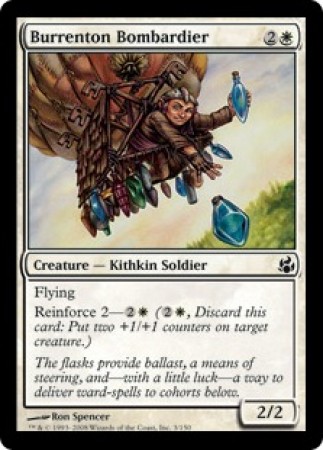15.0 FLYING MOVEMENT AND COMBAT

15.0 FLYING MOVEMENT AND COMBAT

|
|
|
|
|
|
|
|
|
|
|
|
Creatures who have natural or magical flying ability
greatly increase the options available to the
BATTLESYSTEM Game commander, but also greatly
complicate his job.
PROCEDURE
Basic rules on flying movement and
combat for the AD&D game are listed
in the DMG, pp. 49-53 <(Adventures
in the Air: Aerial Travel, Aerial
Combat)>.
Those rules
apply in the BATTLESYSTEM game
except as specifically noted below. For
the D&D game, use the rules given
below only.
CASES
The movement rate of flying creatures
(both natural and magical) are the same
as for the AD&D game. Calculate flying
movement rates in the D&D game in the
same way as ground movement rates.
Also list the Maneuverability
Class
(AD&D game only) for the creature
in the Army Roster Sheet.
In the D&D game, creatures smaller
than man-sized can change direction up
to 180 degrees per Game Round.
Man-sized flying creatures can change
direction up to 90 degrees per Game
Round. Flying creatures significantly
larger than man-sized can change
direction up to 45 degrees per Game
Round. Magical devices, spells,
spell effects, or innate magical abilities
permitting flight (such as those possessed
by air elementals) allow changes of
direction up to 180 degrees per Game
Round. This replaces the AD&D game
Maneuverability Class.
Mounted flying creatures maneuver at
one category worse than normal. A
creature flying at 1/2 or less of its max.
movement rate maneuvers at one
category better than normal.
There are three altitudes for flying
creatures: low (30', or 1"), medium
(120', or 4"), and high (240', or 8"). Use
the appropriate Altitude marker to show
the height of flying creatures. (You can
also stack flying creatures on dice, or
otherwise mark them for easy visual
reference). Flying creatures on the
ground do not need a marker.
It takes 1/3 of a figure's flying
movement rate to rise one altitude level.
There is no movement cost to descend any number of levels.
Most flying creatures can, of course,
fly higher than 240'. However, 8" is the
upper limit on the battlefield. A flying
creature that flys higher than 8" has left
the battlefield and is removed from play.
(Note that a flying creature can escape by
flying up.)
OPTIONAL RULE: In a primarily or
exclusively flying battle, you can change
the definition of altitude levels or create
additional levels to increase the
three-dimensional battlefield.
Flying units must be either in open or skirmish
formation when flying. A flying
unit that is otherwise entitled to do so
can go into closed formation on the
ground.
When a unit in flight attacks a unit on
the ground, the unit on the ground
suffers a +2 AC penalty.
When a unit in flight fires missiles,
treat short range as medium and medium
range as long. EXCEPTION: Units using
fly spells or carpets of flying suffer no
penalties.
If a figure flying with wings receives
any HD of damage (even if the
damage is not sufficient to cause a
wound), it must land immed. It
may MOVE 1/3 its normal movement rate
(even if it had already moved its full
movement rate during the same Game
Round) in landing, but must be on the
ground at the end of its MOVE. This does
not apply to figures with innate or
magical flying ability.
A flying fig. with a Wound marker
cannot take flight again. A flying fig.
that was forced to land because it
received damage but did not receive a
wound can TAKE to the air again on the
following Game Round.

Flying creatures can carry boulders or
other "bombs." This gives them a
maneuverability class
one worse than <>
normal. For every man-sized weight
equivalent in "bombs" dropped, 2d6
damage is caused. Regardless of a
victim's AC, a bomb is dropped
from low altitude as if the victim
were AC 10, a bomb from medium
altitude hits as if the victim were AC 8,
and a bomb from high altitude hits as if
its victim were AC 4.
If magical or special "bombs" are to be
used, the referee or other players must
define their effects in advance.
![]()
Reduce - Reuse - Recycle